MEA Baby Food Market Size
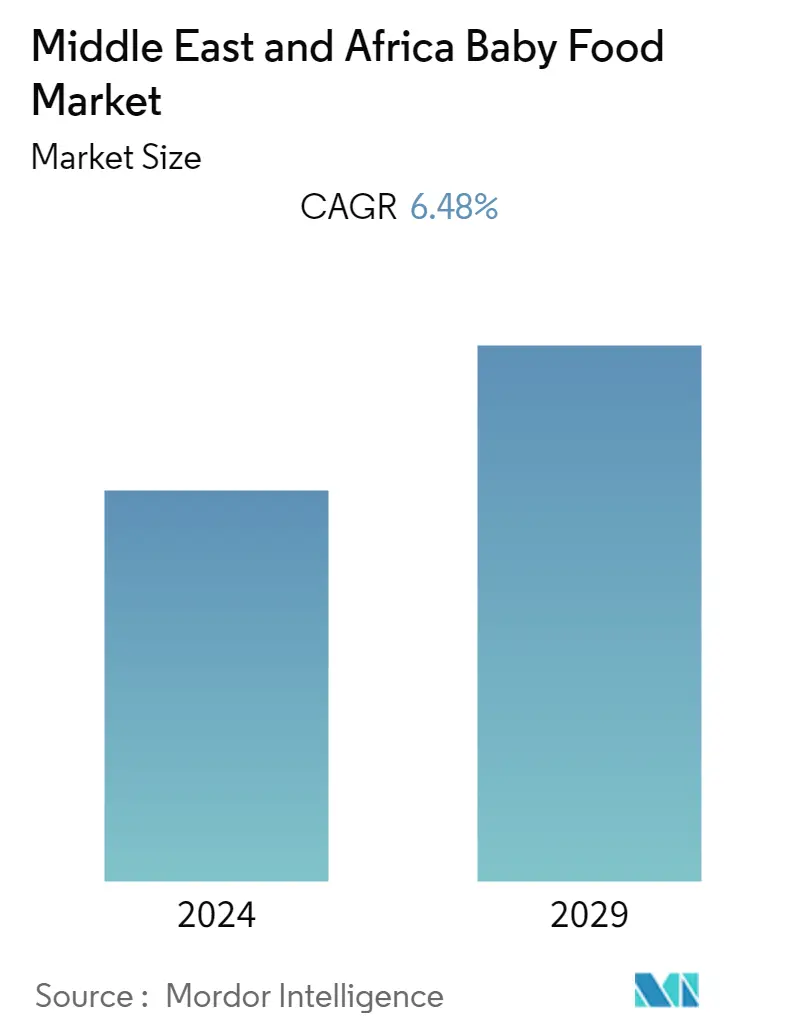
| Study Period | 2019 - 2029 |
| Base Year For Estimation | 2023 |
| Forecast Data Period | 2024 - 2029 |
| Historical Data Period | 2019 - 2022 |
| CAGR | 6.48 % |
| Market Concentration | Low |
Major Players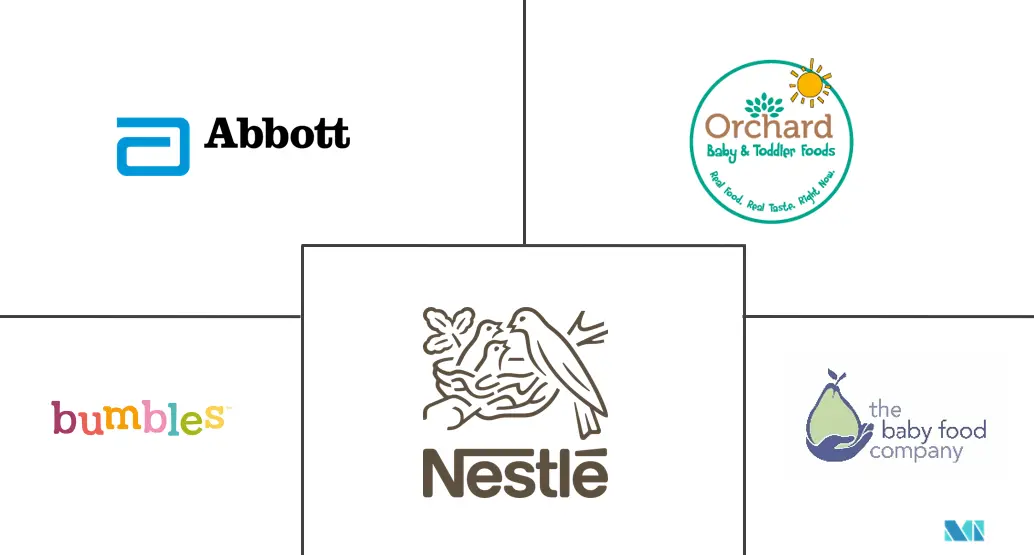
*Disclaimer: Major Players sorted in no particular order |
MEA Baby Food Market Analysis
The Middle East and Africa baby food market is expected to witness a CAGR of 6.48% during the forecast period.
The demand for baby food in Middle East and Africa has witnessed significant growth over the years as parents have become increasingly aware of the significance of baby food in the nutritional necessity of their child's health. Saudi Arabia has a rapidly developing retail sector, and the market for baby food has grown steadily. The demand for baby food in Saudi Arabia has further potential for growth, given the increased exposure to western lifestyles and the economy's underlying strength.
The market expects growth amid innovations with key ingredients, such as human milk oligosaccharides (HMOs) and probiotics. Over the long term, manufacturers are expected to develop products that support the immune system from infancy. In infant nutrition, parents demand the highest safety and quality standards. Key players in the market constantly reform products to make them more appealing to parents and infants. The rising population of working women and the organized retail market, especially in developing economies, are expected to drive the market's growth over the forecast period.
MEA Baby Food Market Trends
This section covers the major market trends shaping the MEA Baby Food Market according to our research experts:
Increasing Infant Population Driving the Baby Food Market in the Region
South Africa and the United Arab Emirates are among the major economies in Middle East and Africa. Growing disposable income in African countries has led to the rising affordability of baby food products, which has resulted in improved quality food for infants. Growth in the Middle East and Africa baby food market is also driven by the increasing number of migrants settling in countries, including the United Arab Emirates, Saudi Arabia, South Africa, and Tanzania, for employment purposes. Therefore, the number of women working outside the home in high- and low-income areas has also risen.
According to the Central Intelligence Agency, in 2021, the fertility rate in Niger was estimated to be 6.91 children per woman. Since working mothers return to their jobs shortly after giving birth, prepared baby foods and formulas, which can be instantly provided to children, are an appealing alternative for working mothers to feed their children with nutritious options. The increasing infant population in the region mainly drives the Middle East and Africa infant/baby food market.
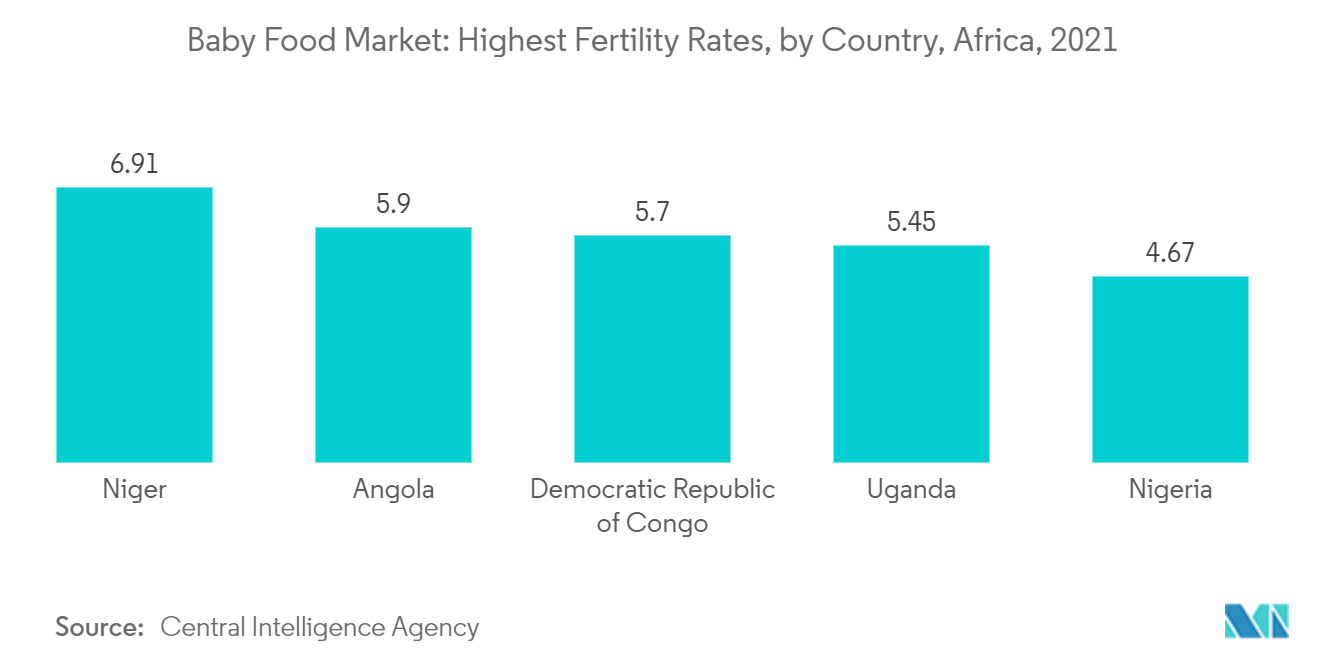
Saudi Arabia Holds a Major Share in the Market
The rising consciousness of quality products is one of the major factors driving the baby food products market growth in Saudi Arabia. Parents are increasingly opting for healthy and ready-to-eat food offerings, such as instant milk formula and snacks, which need less or no preparation time and can be instantly provided to babies. More specifically, baby blends that are organic, non-GMO, 100% plant-derived, dairy-free, gluten-free, and with no added sugars are preferred by parents. The strict laws and government policies of the Saudi Arabian government in ensuring quality products and services, specifically in baby care and food, are boosting the market of baby care products in Saudi Arabia. The Ministry of Health of Saudi Arabia is one of the efficient government organizations that ensure food and product quality at specific intervals.
Baby food is gaining acceptance in Saudi Arabia as a growing number of parents embrace the health and wellness trend. Consumers are becoming more focused on nutrition for their kids and are willing to pay premium prices for baby foods. The health and wellness trend continued to develop, resulting in the growing demand for organic baby food. In the past few years, the launch of free-from-gluten-prepared baby food, such as baby fruits gluten-free pouch, gained traction in the market, with parents becoming increasingly aware of the specific dietary needs of their children. Babies need healthy food that tastes great and does not contain unwanted ingredients. Therefore, key players in Saudi Arabia, like HiPP, offer organic products in accordance with the European Union's regulations for organic production.
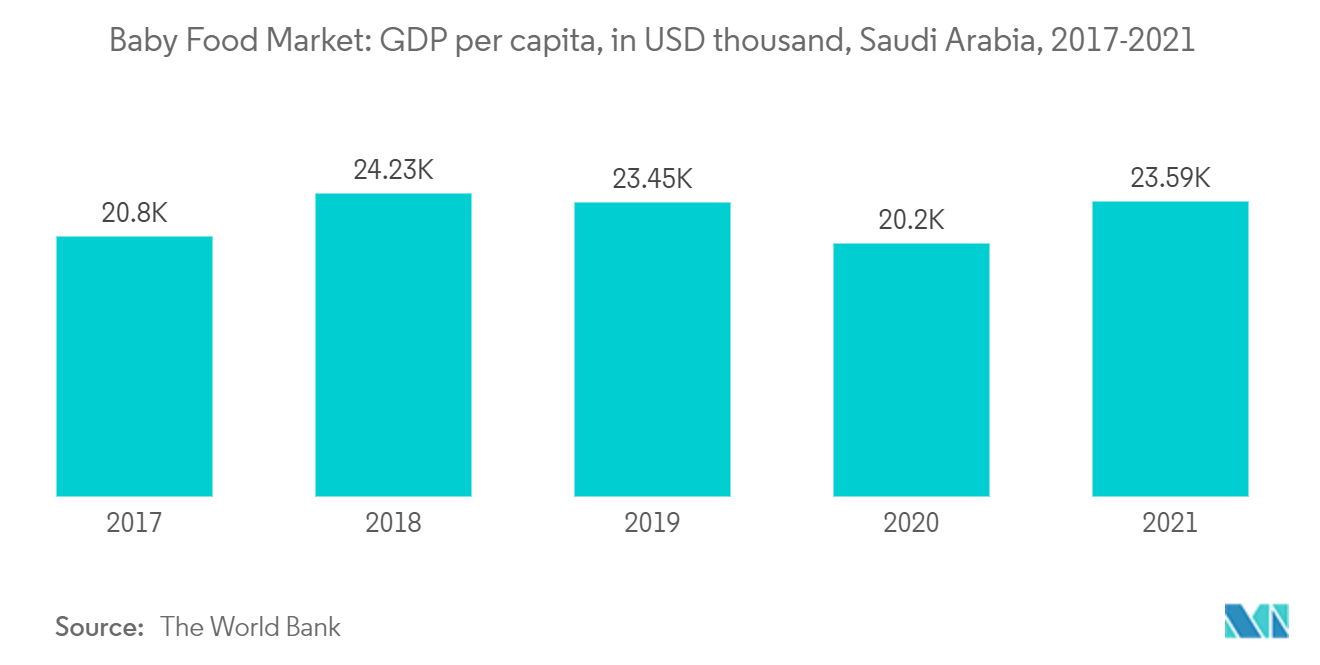
MEA Baby Food Industry Overview
The Middle East and Africa baby food market is competitive. Companies are focusing on developing new marketing strategies and introducing products based on value-added ingredients to compete in the market. Some of the major companies in the Middle East and Africa Food Market are Nestle SA, Abbott Laboratories, The Baby Food Company, Saipro Biotech Pvt Ltd, Orchard Baby Food, Bumbles Baby Food, Tiger Brands, Baby Tastes, and Danone SA, among others.
MEA Baby Food Market Leaders
-
Nestle S.A
-
The Baby Food Company
-
Orchard Baby Food
-
Bumbles Baby Food
-
Abbott Laboratories
*Disclaimer: Major Players sorted in no particular order
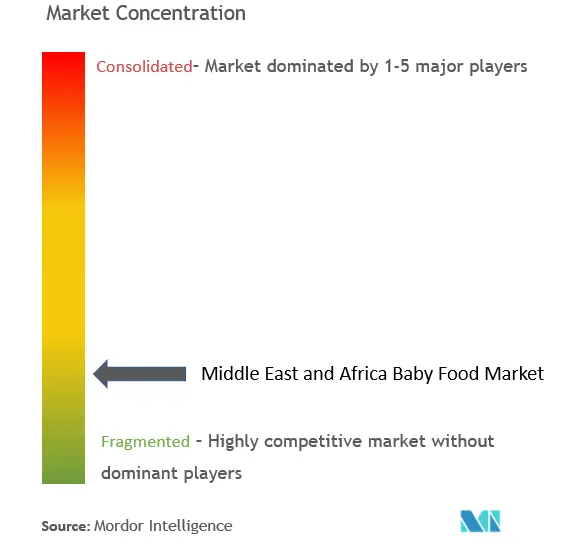
MEA Baby Food Market News
- June 2022: Australian infant nutrition startup Sprout Organic partnered with the world's largest e-commerce platform, Amazon, and launched its plant-based baby formula. Sprout's launched its organic baby food in the Middle East at the Saudi Food Expo.
- March 2022: Le Lionceau, a Dakar-based company specializing in producing and marketing for children aged six months to 36 months, launched its products in Senegal. The company claims that its products are highly nutritional and are made from locally produced fruits, vegetables, cereals, and ingredients.
- September 2021: Kylie Jenner launched "Kylie Baby" in Africa and worldwide. The product is available on the Takealot website in Africa.
MEA Baby Food Market Report - Table of Contents
1. INTRODUCTION
1.1 Study Assumptions and Market Definition
1.2 Scope of the Study
2. RESEARCH METHODOLOGY
3. EXECUTIVE SUMMARY
4. MARKET DYNAMICS
4.1 Market Drivers
4.2 Market Restraints
4.3 Porter's Five Forces Analysis
4.3.1 Threat of New Entrants
4.3.2 Bargaining Power of Buyers/Consumers
4.3.3 Bargaining Power of Suppliers
4.3.4 Threat of Substitute Products
4.3.5 Intensity of Competitive Rivalry
5. MARKET SEGMENTATION
5.1 By Type
5.1.1 Milk Formula
5.1.2 Dried Baby Food
5.1.3 Prepared Baby Food
5.1.4 Other Types
5.2 By Distribution Channel
5.2.1 Hypermarket/Supermarket
5.2.2 Drugstores/Pharmacies
5.2.3 Convenience Stores
5.2.4 Other Distribution Channels
5.3 By Geography
5.3.1 Saudi Arabia
5.3.2 South Africa
5.3.3 Rest of Middle East and Africa
6. COMPETITIVE LANDSCAPE
6.1 Strategies Adopted by the Leading Players
6.2 Market Share Analysis
6.3 Company Profiles
6.3.1 Nestle SA
6.3.2 Abbott Laboratories
6.3.3 The Baby Food Company
6.3.4 Saipro Biotech Pvt. Ltd
6.3.5 Orchard Baby Food
6.3.6 Bumbles Baby Food
6.3.7 Tiger Brands
6.3.8 Danone S.A.
6.3.9 Almarai Co. Ltd
6.3.10 Ordesa
- *List Not Exhaustive
7. MARKET OPPORTUNITIES AND FUTURE TRENDS
MEA Baby Food Industry Segmentation
Baby food is any soft, easily digestible meal created particularly for human babies.
The Middle East and African baby food market is segmented by type, distribution channel, and geography. By type, the market has been segmented into milk formula, dried baby food, prepared baby food, and other types. By distribution channel, the market has been segmented into hypermarkets/supermarkets, convenience stores, drug/pharmacies, and other distribution channels. By geography, the market has been segmented into the United Arab Emirates, South Africa, and the Rest of the Middle East and Africa. The report offers market sizes and forecasts in value (USD million) for the abovementioned segments.
| By Type | |
| Milk Formula | |
| Dried Baby Food | |
| Prepared Baby Food | |
| Other Types |
| By Distribution Channel | |
| Hypermarket/Supermarket | |
| Drugstores/Pharmacies | |
| Convenience Stores | |
| Other Distribution Channels |
| By Geography | |
| Saudi Arabia | |
| South Africa | |
| Rest of Middle East and Africa |
MEA Baby Food Market Research FAQs
What is the current Middle East and Africa Baby Food Market size?
The Middle East and Africa Baby Food Market is projected to register a CAGR of 6.48% during the forecast period (2024-2029)
Who are the key players in Middle East and Africa Baby Food Market?
Nestle S.A, The Baby Food Company, Orchard Baby Food, Bumbles Baby Food and Abbott Laboratories are the major companies operating in the Middle East and Africa Baby Food Market.
What years does this Middle East and Africa Baby Food Market cover?
The report covers the Middle East and Africa Baby Food Market historical market size for years: 2019, 2020, 2021, 2022 and 2023. The report also forecasts the Middle East and Africa Baby Food Market size for years: 2024, 2025, 2026, 2027, 2028 and 2029.
Middle East and Africa Baby Food Industry Report
Statistics for the 2024 Middle East and Africa Baby Food market share, size and revenue growth rate, created by Mordor Intelligence™ Industry Reports. Middle East and Africa Baby Food analysis includes a market forecast outlook to 2029 and historical overview. Get a sample of this industry analysis as a free report PDF download.



